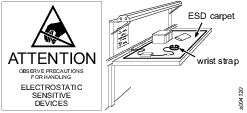Product Information
General Information
Safety Signal Words
The safety signal words Danger, Warning, Caution, and Notice have the following meanings:
DANGER | DANGER indicates a hazardous situation which, if not avoided, will result in death or serious injury. |
WARNING | WARNING indicates a hazardous situation which, if not avoided, could result in death or serious injury. |
CAUTION | CAUTION, used with the safety alert symbol, indicates a hazardous situation which, if not avoided, could result in minor or moderate injury. |
NOTICE | NOTICE is used to address practices not related to personal injury. |
Warranty
Product warranty will expire 12 months after the product is first taken into use, but will in any case expire at the latest 13 months after delivery.
Normal wear and tear on parts is not included within the warranty.
Normal wear and tear is that which requires a part change or other adjustment/overhaul during standard tools maintenance typical for that period (expressed in time, operation hours or otherwise).
The product warranty relies on the correct use, maintenance, and repair of the tool and its component parts.
Damage to parts that occurs as a result of inadequate maintenance or performed by parties other than Atlas Copco or their Certified Service Partners during the warranty period is not covered by the warranty.
To avoid damage or destruction of tool parts, service the tool according to the recommended maintenance schedules and follow the correct instructions.
Warranty repairs are only performed in Atlas Copco workshops or by Certified Service Partners.
Atlas Copco offers extended warranty and state of the art preventive maintenance through its ToolCover contracts. For further information contact your local Service representative.
For electrical motors:
Warranty will only apply when the electric motor has not been opened.
Website
Information concerning our Products, Accessories, Spare Parts and Published Matters can be found on the Atlas Copco website.
Please visit: www.atlascopco.com.
ServAid
ServAid is a portal that is continuously updated and contains Technical Information, such as:
Regulatory and Safety Information
Technical Data
Installation, Operation and Service Instructions
Spare Parts Lists
Accessories
Dimensional Drawings
Please visit: https://servaid.atlascopco.com.
For further Technical Information, please contact your local Atlas Copco representative.
Safety Data Sheets MSDS/SDS
The Safety Data Sheets describe the chemical products sold by Atlas Copco.
Please consult the Atlas Copco website for more information www.atlascopco.com/sds.
Country of Origin
For the Country of Origin, please refer to the information on the product label.
Dimensional Drawings
Dimensional Drawings can be found either in the Dimensional Drawings Archive, or on ServAid.
Please visit: http://webbox.atlascopco.com/webbox/dimdrw or https://servaid.atlascopco.com.
Overview
General information
The FlexController contains the central processing logic for internal and external communication for the FlexSystem
Average power consumption
|
Average power consumption |
4 W |
Normal Environmental Conditions
This product is designed to be safe under the following conditions:
Indoor use
Altitude up to 2 000 m
Operating temperature +5.0 °C / +41.0 °F to +50.0 °C / +122.0 °F
Storage temperature +5.0 °C / +41.0 °F to +50.0 °C / +122.0 °F
Maximum relative humidity 80 % for temperatures up to 31 °C / 89 °F decreasing linearly to 50 % relative humidity at 40 °C / 104 °F
Mains supply voltage fluctuations up to ±10 % of the nominal voltage
Transient overvoltages up to the levels of overvoltage category II
Temporary overvoltages occurring on the mains supply
Pollution degree 2
Ingress protection rating: IP54
Technical Product Data
Technical Product Data can be found on either ServAid, or the Atlas Copco website.
Please visit: https://servaid.atlascopco.com or www.atlascopco.com.
Service Overview
Service Recommendations
Preventive maintenance is recommended at regular intervals. See the detailed information on preventive maintenance. If the product is not working properly, take it out of service and inspect it.
If no detailed information about preventive maintenance is included, follow these general guidelines:
Replace any defective or worn parts
Preventive maintenance
Always replace, never repair, a malfunctioning FlexController. Replace a malfunctioning FlexController immediately.
The maximum product life time of the FlexController is 20 years. Production date is marked on the front of the FlexController. When reaching maximum product life time the FlexController shall be replaced and put permanently out of order.

A. Production date
When a FlexController is replaced the safety functionality must be tested in a safe manner before normal operation is resumed.
Installation
Installation Instructions
Digital output
The digital output consists of four individually isolated relay outputs. The relays are rated to 500 VACrms input to output isolation. The output pins comes in groups of three:
One relay have a center pin (Out X common)
Normally Closed pin (Out X NC)
Normally Open pin (Out x NO)
The Out X common pin should be connected to the equipment which is to be controlled and the two other pins to a suitable High or Low level for the equipment to be controlled
Max relay switch current is 2 A at 24VDC.
If the output is connected to an inductive load a fly back diode is required, to prevent the relay tongue from welding towards a pole when opening the circuit.
Max output cable length is 3 m.

Pin | Signal Name | Description |
|---|---|---|
1 | N.C. DIG_OUT1 | Relay Contacts |
2 | COM_DIG_OUT1 | Relay Contacts |
3 | N.O. DIG_OUT1 | Relay Contacts |
4 | N.C. DIG_OUT2 | Relay Contacts |
5 | COM_DIG_OUT2 | Relay Contacts |
6 | N.O. DIG_OUT2 | Relay Contacts |
7 | N.C. DIG_OUT3 | Relay Contacts |
8 | COM_DIG_OUT3 | Relay Contacts |
9 | N.O. DIG_OUT3 | Relay Contacts |
10 | N.C. DIG_OUT4 | Relay Contacts |
11 | COM_DIG_OUT4 | Relay Contacts |
12 | N.O. DIG_OUT4 | Relay Contacts |
Industrial ethernet
Pin | Signal Name |
|---|---|
1 | TD+ |
2 | RD+- |
3 | TD- |
4 | RD- |
Digital input
Nominal input: 24V ± 10%.

Pin | Signal Name | Dir | Description |
|---|---|---|---|
1 | 24V_OUT | Power out | |
2 | 24V_OUT | Power out | For pin 1-5: Maximum cable length 3 m. The I/O IN connector includes a low current 24 V / max 50 mA output intended to drive the opto couplers, which are sinking 24 V inputs. |
3 | GND_GND | Power out | |
4 | GND_GND | Power out | |
5 | GND_GND | Power out | |
6 | DIG_IN_GND | Input Gnd | Common Input Gnd. |
7 | DIG_IN1 | Input | Sinking input. |
8 | DIG_IN2 | Input | Sinking input. |
9 | DIG_IN3 | Input | Sinking input. |
10 | DIG_IN4 | Input | Sinking input. |
Connection interfaces
Front

|
Pos |
Connection |
|---|---|
|
1 |
USB 2.0
|
|
2 |
Service ethernet port. Ethernet RJ45 connector. |
|
3 |
Factory ethernet port. Ethernet RJ45 connector. |
|
4 |
Industrial ethernet with M12 D-coded. |
|
5 |
Flex Intelligent Application Module (FlexIAM):
|
|
6 |
LED lights. |
|
7 |
Digital output, 4 outputs. |
|
8 |
Digital input, 4 inputs. |
|
9 |
Fieldbus module slot. |
Back

|
Pos |
Connection |
|---|---|
|
1 |
Connection to FlexCarrier, protective earth. |
|
2 |
Connection to FlexCarrier 24VDC, ethernet, emergency stop. |
Install FlexController
Insert the FlexIAM.
Plug in the FlexController in the first slot on the FlexCarrier.
Fasten the FlexController to the FlexCarrier. Wait to tighten it until all modules are fastened to the FlexCarrier.
Route the cables to the FlexController.
Prepare the gasket for cable routing.
Install the cables.
Make sure that the cable will fit under the cover.
Max length from connection panel surface to inside of cover (L).
max 45.7 mm
Max cable bend (R)
25 mm
Route the installed cables down through the cable routing gasket.

To prevent dust or water to get inside the FlexController make sure it is a tight fit between the cable and gasket.
Fasten the cover. Make sure the cover fits tight.

Changing Fieldbus
For FlexController PROFIsafe (8436 1500 01), ProfiSafe modules are included.
For FlexController Anybus (8436 1500 10), no Fieldbus module is included.
Remove the old fieldbus from the slot.
Insert the new fieldbus.

Operation
Ergonomic Guidelines
Consider your workstation as you read through this list of general ergonomic guidelines to identify areas for improvement in posture, component placement, or work environment.
Take frequent breaks and change work positions frequently.
Adapt the workstation area to your needs and the work task.
Adjust for a convenient reach range by determining where parts and tools need to be located to avoid static load.
Use workstation equipment such as tables and chairs appropriate for the work task.
Avoid work positions above shoulder level or with static holding during assembly operations.
When working above shoulder level, reduce the load on the static muscles by lowering the weight of the tool, using for example torque arms, hose reels or weight balancers. You can also reduce the load on the static muscles by holding the tool close to the body.
Take frequent breaks.
Avoid extreme arm or wrist postures, particularly during operations requiring a degree of force.
Adjust for a convenient field of vision that requires minimal eye and head movements.
Use appropriate lighting for the work task.
Select the appropriate tool for the work task.
In noisy environments, use ear protection equipment.
Use high-quality inserted tools and consumables to minimize exposure to excessive levels of vibration.
Minimize exposure to reaction forces.
When cutting:
A cut-off wheel can get stuck if the cut-off wheel is bent or not guided properly. Use the correct flange for the cut-off wheel and avoid bending the cut-off wheel during operation.
When drilling:
The drill might stall when the drill bit breaks through. Use support handles if the stall torque is high. The safety standard ISO11148 part 3 recommends using a device to absorb a reaction torque above 10 Nm for pistol grip tools and 4 Nm for straight tools.
When using direct-driven screwdrivers or nutrunners:
Reaction forces depend on the tool settings and joint characteristics. Strength and posture determine the amount of reaction force that an operator can tolerate. Adapt the torque setting to the operator's strength and posture and use a torque arm or reaction bar if the torque is too high.
In dusty environments, use a dust extraction system or wear a mouth protection mask.
Service
Preventing ESD Problems
The components inside the product and controller are sensitive to electrostatic discharge. To avoid future malfunction, make sure that service and maintenance is carried out in an ESD approved work environment. The figure below shows an example of an appropriate service work station.

Maintenance Instructions
Service Recommendations
Preventive maintenance is recommended at regular intervals. See the detailed information on preventive maintenance. If the product is not working properly, take it out of service and inspect it.
If no detailed information about preventive maintenance is included, follow these general guidelines:
Replace any defective or worn parts
Recycling
Environmental Regulations
When a product has served its purpose it has to be recycled properly. Dismantle the product and recycle the components in accordance with local legislation.
Batteries shall be taken care of by your national battery recovery organization.
Recycling information

| Part | Recycle as |
|---|---|---|
1 | Screws | Steel |
2 | Left cover | Aluminium |
3 | IT board | WEEE |
4 | Fieldbus | WEEE |
5 | Connector board | WEEE |
6 | Front cover | Steel |
7 | Connector cover | PA plastic |
8 | Right cover | Aluminium |